News Archive
Filter By
- Abyssinian ground hornbill
- Addax
- Aldabra tortoise
- Allen's swamp monkey
- Alpaca
- American alligator
- American avocet
- American bison
- American flamingo
- American wigeon
- Andean bear
- Aquatic caecilian
- Arapaima
- Asian elephant
- Asian small-clawed otter
- Asian water dragon
- Australian snake-necked turtle
- Bald eagle
- Baltimore oriole
- Barred owl
- Bearded emperor tamarin
- Beaver
- Bennett's wallaby
- Binturong
- Black-and-white ruffed lemur
- Black-crowned night heron
- Black-footed ferret
- Black-tailed prairie dog
- Black-throated blue warbler
- Blue-billed curassow
- Blue crane
- Bobcat
- Brown pelican
- Bufflehead
- California sea lion
- Canvasback
- Cedar waxwing
- Channel catfish
- Cheetah
- Chicken
- Chinese alligator
- Chinese three-striped box turtle
- Clouded leopard
- Collared brown lemur
- Common raven
- Common yellowthroat
- Corals and sea anemones (anthozoa)
- Cow
- Crocodile monitor
- Cuban crocodile
- Dama gazelle
- Degu
- Dunlin
- Eastern corn snake
- Eastern indigo snake
- Eastern newt
- Eastern red-backed salamander
- Eastern screech-owl
- Eld's deer
- Electric eel
- Emperor newt
- Fennec fox
- Fishing cat
- Gaboon viper
- Geoffroy's marmoset
- Gharial
- Giant leaf-tailed gecko
- Giant panda
- Goat
- Golden-headed lion tamarin
- Golden lion tamarin
- Gray seal
- Gray wolf
- Green tree python
- Grevy's zebra
- Guam kingfisher (sihek)
- Guam rail (ko’ko’)
- Guinea pig
- Harbor seal
- Hartmann's mountain zebra
- Hawk-headed parrot
- Hellbender
- Home's hinge-back tortoise
- Hooded crane
- Iranian fat-tailed gecko
- Japanese giant salamander
- King vulture
- Komodo dragon
- Kori bustard
- Kunekune pig
- Land hermit crab
- Larger Malay mouse-deer
- Lemur leaf frog
- Lesser hedgehog tenrec
- Lesser kudu
- Lion
- Loggerhead shrike
- Long-tailed chinchilla
- Long-tailed salamander
- Maned wolf
- Meerkat
- Miniature donkey
- Naked mole-rat
- North American porcupine
- North American river otter
- Northern Luzon giant cloud rat
- Northern pine snake
- Northern pintail
- Northern red salamander
- Northern shoveler
- Northern snakehead fish
- Northern tree shrew
- North Island brown kiwi
- Norway rat
- Orangutan
- Orchard oriole
- Ossabaw Island hog
- Ostrich
- Ovenbird
- Pallas's cat
- Panamanian golden frog
- Patagonian mara
- Persian onager
- Philippine crocodile
- Prehensile-tailed porcupine
- Prevost's squirrel
- Przewalski's horse
- Pygmy slow loris
- Red-crowned crane
- Red-fronted lemur
- Red-rumped agouti
- Red-winged blackbird
- Red knot
- Red panda
- Red River hog
- Red ruffed lemur
- Red wolf
- Ring-tailed lemur
- Ruddy duck
- Schmidt's red-tailed monkey
- Scimitar-horned oryx
- Screaming hairy armadillo
- Semipalmated plover
- Semipalmated sandpiper
- Siamang
- Sitatunga
- Sloth bear
- Southern lesser galago
- Southern swamp sparrow
- Southern tamandua
- Spider tortoise
- Striped skunk
- Tanagers
- Tentacled snake
- Tiger
- Titi monkey
- Turkey
- Twig catfish
- Two-toed sloth
- Vietnamese mossy frog
- Virginia opossum
- Von der Decken's hornbill
- Western lowland gorilla
- White-cheeked gibbon
- White-faced saki
- White-naped crane
- White-nosed coati
- Whooping crane
Displaying 1301 - 1325 of 2368 articles.
Smithsonian's National Zoo Welcomes New Seal Pup to Gray Seal Colony
The Smithsonian’s National Zoo’s American Trail team is celebrating the arrival of a female gray seal pup, born Jan. 21 at 12:43 a.m. to mother Kara.
Elderly Black-Footed Ferret Dies at Smithsonian Conservation Biology Institute
A geriatric black-footed ferret named Capone was humanely euthanized Jan. 19 at the Smithsonian Conservation Biology Institute (SCBI). He was seven years old.
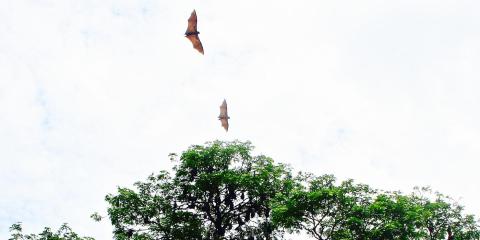
Predicting the Future of Global Health
Where and when will the next global health crisis occur? As part of USAID’s Emerging Pandemic Threat program, PREDICT, scientists in Smithsonian’s Global Health Program are on the ground in Myanmar, training local wildlife biologists on how to answer that very question.
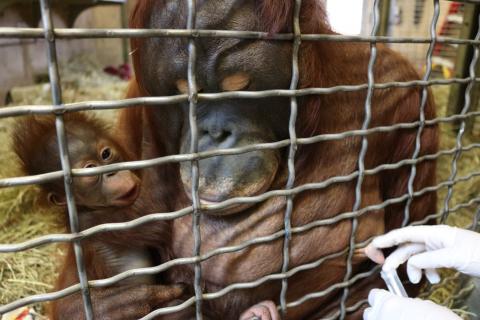
The Secret Ingredient to Primate Development
Smithsonian Conservation Biology Institute scientist Michael Power and primate keeper Erin Stromberg discuss the science behind great ape milk in this Q & A.
The Zoo in Your Backyard
When the Shenandoah Valley and Northern Piedmont grasslands thaw from winter’s frost and transform with spring’s arrival, Smithsonian Conservation Biology Institute (SCBI) researchers and citizen scientists travel the region in pursuit of pollinators and other wildlife. As part of the Virginia...
Farewell Celebration for Giant Panda Bao Bao
Join the Smithsonian’s National Zoo for “Bye Bye, Bao Bao,” a series of online and on-site celebratory events to bid a fond farewell to giant panda Bao Bao (BOW-BOW) before she departs for China.
Pacific Loon Expedition Blog
Tracking pacific loons from two breeding populations in Alaska.
Bei Bei's Recovery Updates
Bei Bei is continuing to recover well from his major surgery, and he started eating small amounts of bamboo again a few weeks ago. He now gets several meals of leaf eater biscuits, sweet potatoes and apples, and several bamboo feedings every day. He eagerly consumes all his food—much as he has since...

A Pachyderm Project
How big does a “weeble-wobble” have to be to withstand the strength of six female Asian elephants? Over the fall 2016 semester, students at MICA, the Maryland Institute College of Art, sought to answer that question. Collaborating with the Smithsonian’s National Zoo’s animal care team, they designed...
Gorilla See, Gorilla Do
Calaya is not like the Zoo’s other western lowland gorillas. For months, keepers tried to encourage Calaya to train and participate in enrichment activities to no avail. Then came an “AHA!” moment: Calaya learned best not solely through human interaction, but by observing the actions of the other...
Three Kiwi Chicks at the Smithsonian Conservation Biology Institute Receive Names
The first three brown kiwi chicks to hatch from eggs laid and incubated at the Smithsonian Conservation Biology Institute (SCBI) have received names. The male chicks are Hari (hatched May 10), Kaha (hatched June 1) and Kake (hatched July 31). In Maori their names translate to “joy,” “strong,” and...
Bei Bei Recovers From Surgery
As Bei Bei recovers from surgery, his diet is slowly returning to normal but he still needs to wait until he can eat bamboo. However, he continues to gain weight, and has crossed the 100-pound (45 kilos) mark. While Bei Bei continues his recovery, we have adjusted Mei Xiang’s schedule to ensure that...
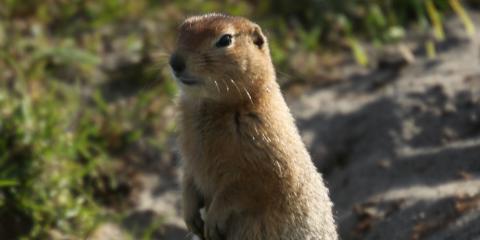
SCBI Researchers Use Ancient DNA to Prove Arctic Ground Squirrel May Not Be an Invasive Species
Ancient DNA testing has proved the Arctic ground squirrel—believed to have been introduced to Alaska’s Chirikof Island in the early 18 th century—has actually been part of the island ecosystem for at least 2,000 years.
Cold Weather Statement
With temperatures dropping, the Smithsonian’s National Zoo continues to ensure that all of its animals are healthy and comfortable.

Smithsonian Conservation Biology Institute forms Partnership with Wilson College
Smithsonian Conservation Biology Institute (SCBI) and Wilson College have formed a partnership that will provide academic opportunities for Wilson students and help develop future generations of conservation professionals. SCBI and Wilson officials recently signed a memorandum of understanding...
Smithsonian’s National Zoo To Build “Experience Migration” Exhibition Dedicated to Migratory Birds
The Smithsonian’s National Zoo and Conservation Biology Institute is transforming its historic 1928 Bird House into “Experience Migration,” a state-of-the-art exhibition about one of the most spectacular stories in the natural world—the migration of birds in the Western Hemisphere. “Experience...
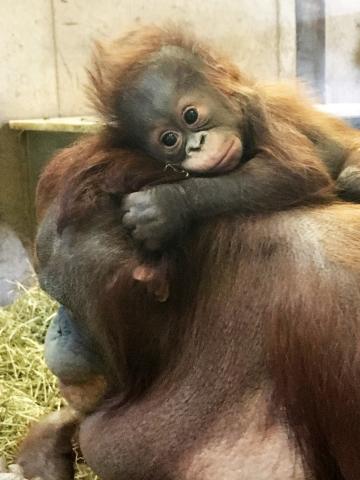
Bornean Orangutan Redd's Social Circle is Growing
What has the Zoo’s 10-week-old Bornean orangutan, Redd, been up to? His social circle is expanding, says keeper Erin Stromberg, and his personality and curiosity are starting to develop! Get the latest on Redd and his mom, Batang, in the latest keeper Q&A.
Giant Panda Cub Bei Bei Recovering from Successful Bowel Surgery
Smithsonian’s National Zoo’s giant panda cub Bei Bei is stable and recovering following an emergency bowel obstruction surgery to remove a dense, masticated lemon-sized mass of bamboo.
Orangutan Caring Week
Happy Orangutan Caring Week! We’re celebrating the Zoo’s seven orangutans by sharing their stories. Redd Update Here’s lookin’ at you, kid! At 8 weeks old, our Bornean orangutan Redd is alert, attentive and making eye contact with those around him. His social circle is expanding, too. Earlier this...
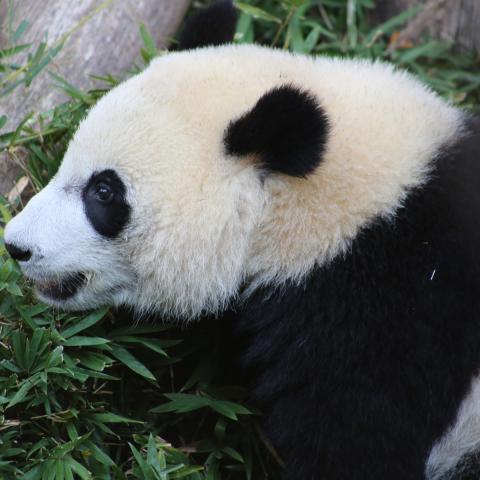
Bei Bei's Growing Up
Bei Bei is becoming more and more independent from his mother Mei Xiang every day. It is hard to believe, but the time is rapidly approaching when he will live separately from her. He has a voracious appetite, and relies very little on milk from Mei Xiang. He weighs 90 pounds (the largest of Mei...
First Wild Horse Born From Artificial Insemination Moving From the Smithsonian Conservation Biology Institute
The first Przewalski’s (cha-VAL-skee) horse born from artificial insemination moved from the Smithsonian Conservation Biology Institute (SCBI) to the Dakota Zoo in Bismarck, N.D., today, Nov. 21. The move is based on a breeding recommendation. The mare, Christine, was born July 27, 2013, and her...
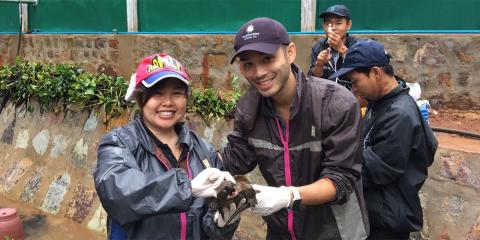
Turtle Survival Alliance: Big-Headed Turtle Confiscation in Myanmar
On Nov. 7 2016, approximately 800 big-headed turtles ( Platysternon megacephalum) were confiscated from Chinese traders arrested in Tachileik, Myanmar. Dr. Marc Valitutto of Smithsonian Global Health, stationed in Myanmar to conduct pangolin health research, was called upon to provide lifesaving...
